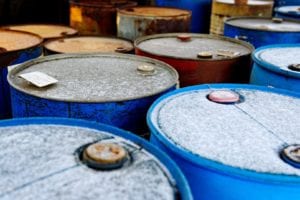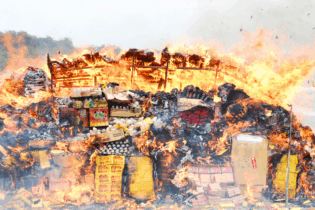The Waste Act is systematically making industry sectors responsible for managing the waste the produce, and the construction industry is no exception. But besides building and demolition waste, the industry needs to take responsibility for other waste streams, such as used oil.
Used lubricant oil, a common by-product of mechanised processes in the construction and earth moving industry, contains harmful compounds and carcinogens. Classified as a hazardous waste and strictly governed by the Waste Act, just one litre of used oil can contaminate one million litres of water. The ROSE Foundation (Recycling Oil Saves the Environment) offers some advice to used oil generators in the construction sector.1. Proper collection and storage
Used oil often contaminates water through disposal in drains and stormwater drains and by being poured directly onto the ground as either a dust suppressant or as a means of disposal. Anyone who services or repairs construction machinery must drain the used oil into a clean container with a tight-fitting lid. A specially designed plastic Sumpy or container can be used collect and store used oil. Ensure that used oil is stored in a clearly marked container with a secure lid. Empty oil containers and drums make effective makeshift storage vessels for used oil, so long as they have not previously held chemicals, such as cleaners, solvents, fuels, paint or bleach. Mixing oil with other fluids such as antifreeze, transmission fluid, or diesel not only makes them non-recyclable, but also very hazardous and flammable. These containers must be kept in a place that can be accessed by a collector, and the surrounding area must be kept clear and clean. Ideally containers should be stored under cover and away from heat or sources of ignition. Building a bund wall around your bulk used oil storage tanks will contain any oil in the event of a spill or leak.2. Removal for responsible recycling
Once properly gathered and stored, used oil generators are urged to contact a ROSE registered oil collector to remove the oil and take it away to be recycled in an environmentally compliant and safe manner. “Your collector must always issue you with a safe disposal certificate which is now required by law under the Waste Act,” says Bubele Nyiba, CEO of ROSE.“This safe disposal certificate issued by ROSE registered collectors also acts as a Hazardous Waste Manifest, thereby fulfilling the requirements of reporting by law, the same information can be used on SAWIS.”
3. Registering on SAWIS
Nyiba goes on to explain that if you generate in excess of 20kg of used oil per day, you are required to register on the South African Waste Information System (SAWIS). Once registered, the generators need to submit their figures to SAWIS every 90 days (quarterly). The information needs to be based on actual volumes and not estimates. The following information needs to be submitted and retained by the waste generator for five years, to be produced for inspection required:- the month and year to which the information applies
- the category of waste; HW07 Waste Oils 01 Waste oil
- the source from which waste comes
- the quantity of waste reported in tons.
4. Waste Manifest
As used oil is a hazardous waste, generators are required to maintain the following information on a Hazardous Waste Manifest – a document that will track the used oil from cradle to grave and offer a clear snapshot on how it has been managed.- unique consignment identification number in the form of a bar code
- the generator’s contact details, including the contact person, physical and postal address, phone and fax number and email address
- the physical address of the site where the waste was generated
- an emergency contact number
- the origin/source of the waste (how it was generated)
- a description of the waste (waste classification and waste category)
- the physical nature / consistency of the waste (liquid, solid, sludge; pump-able, non-pump-able);
- the quantity of waste;
- packaging (bulk, small containers, tank)
- transport type (tanker, truck, container)
- special handling instructions
- the date of collection / dispatch
- the intended receiver (waste manager).








